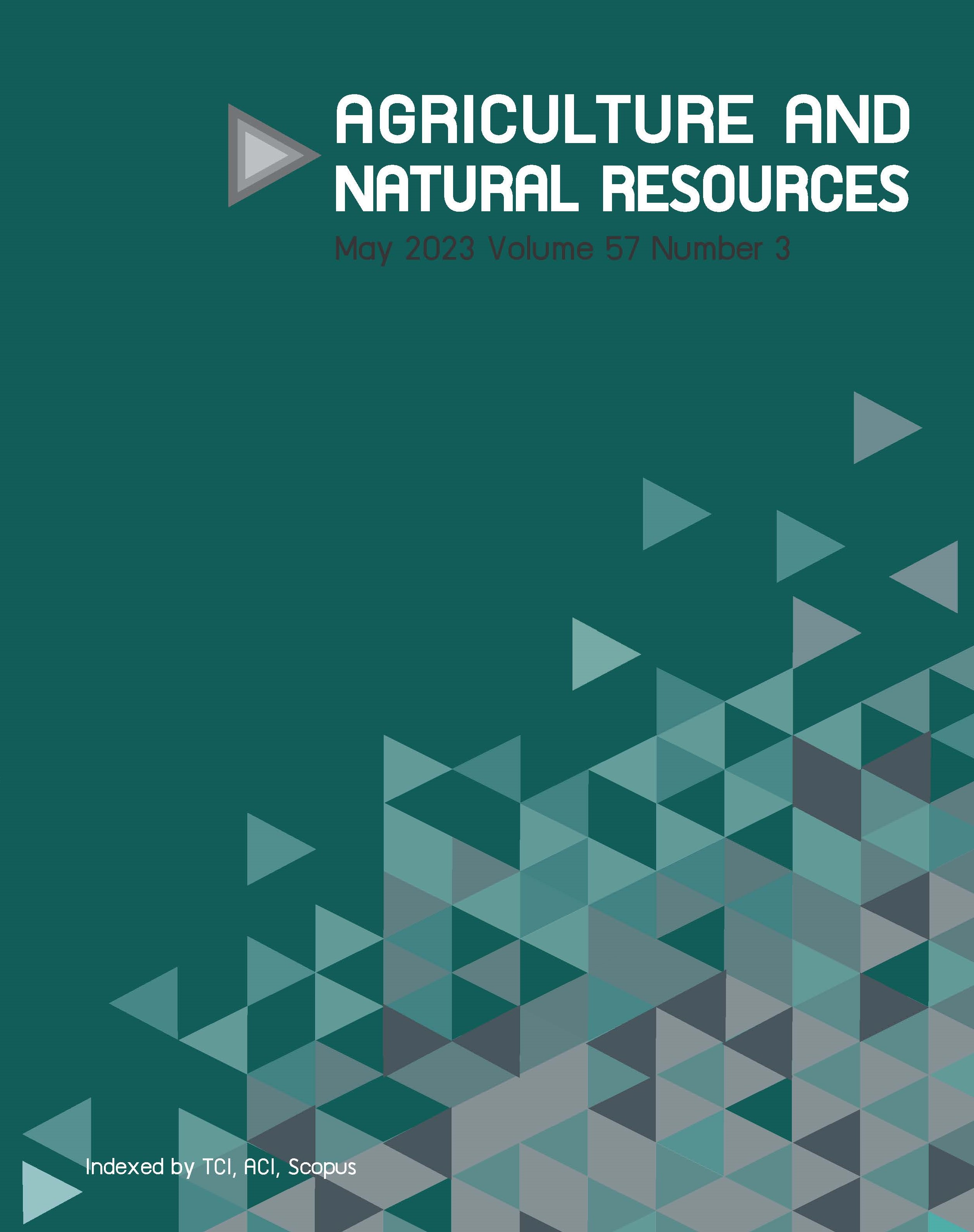Seasonal abundance of Culicoides imicola and Culicoides oxystoma in Prachuap Khiri Khan province, Thailand
Keywords:
Biting midge, Culicoides imicola, Culicoides oxystoma, Seasonal abundance, ThailandAbstract
Importance of the work: Culicoides spp. (biting midges) are one of the most abundant hematophagous insects in livestock. However, limited information is available about their seasonal abundance in Thailand.
Objectives: To study the seasonal abundance of the most common Culicoides species and to assess their association with weather parameters.
Materials & Methods: The seasonality of Culicoides (Diptera: Ceratopogonidae) species was assessed monthly from November 2020 to October 2021 using four Center for Disease Control miniature light traps at a horse stable in Hua Hin district, Prachuap Khiri Khan province, Thailand.
Results: In total, 10,849 females of the genus Culicoides were identified, representing 23 species, consisting of C. imicola (43.4%), C. oxystoma (24.4%), C. peregrinus (16.7%), C. tainanus (3%), C. actoni (1.7%), C. fulvus (1.5%), C. flavipunctatus (1.3%), C. huffi (1%), C. innoxius (0.9%), C. orientalis (0.8%) and another 13 Culicoides species that accounted for 2%. Two predominant species—C. imicola and C. oxystoma—occurred throughout the entire study period. Both species showed no significant differences in seasonal abundance pattern. No significant correlations were identified between numbers of C. imicola and C. oxystoma with rainfall, temperature or relative humidity.
Main finding: This study was the first investigating the seasonal abundance of C. imicola and C. oxystoma in Thailand. More detailed studies are needed to better understand abiotic and biotic factors affecting Culicoides abundance and distribution.
Downloads
Published
How to Cite
Issue
Section
License
Copyright (c) 2023 Kasetsart Universityonline 2452-316X print 2468-1458/Copyright © 2022. This is an open access article under the CC BY-NC-ND license (http://creativecommons.org/licenses/by-nc-nd/4.0/),
production and hosting by Kasetsart University of Research and Development Institute on behalf of Kasetsart University.







